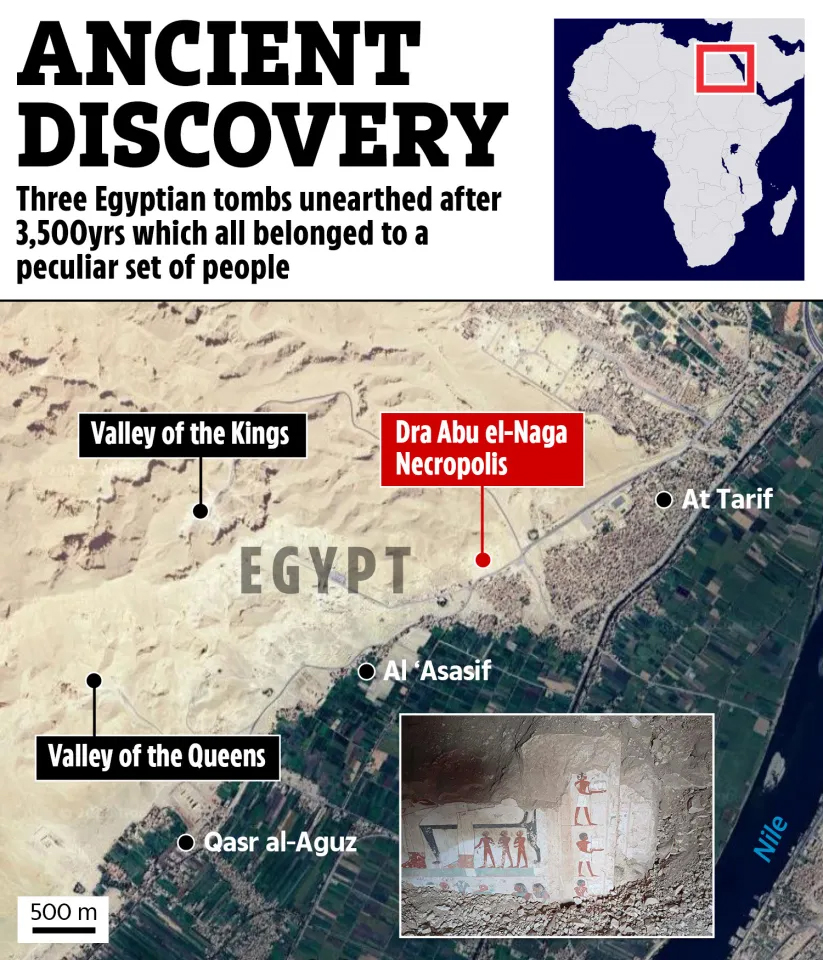Context:
Egyptian archaeologists have discovered three ancient tombs in the Dra Abu al-Naga necropolis in Luxor. These tombs date back to the New Kingdom period (1550–1070 BCE), a time when ancient Egypt was at the height of its power and wealth. The discoveries provide new information about important officials who lived during that time.
More about the News:
According to Egypt’s Ministry of Tourism and Antiquities, the tombs contain inscriptions that helped researchers identify the names and titles of the people buried there. The ministry also shared pictures showing artefacts and statues found inside.
Tomb of Amum-em-Ipet
One of the tombs belongs to a man named Amum-em-Ipet, who lived during the Ramesside period (part of the later New Kingdom). He worked in the estate of Amun, an important temple and economic center. His tomb was mostly destroyed, but parts of it still remain. These include:
· Scenes of funeral furniture carriers
· A banquet scene
· A layout consisting of a small courtyard, an entrance, a square hall, and a niche, although the western wall of the niche has been destroyed.
Tomb of Baki
Another tomb belongs to Baki, an official from the 18th Dynasty who was a supervisor of the grain silo — a key job in managing food supplies. His tomb includes:
· A courtyard leading to the main entrance
· A long corridor-like courtyard
· A transverse hall (running side-to-side)
· A longitudinal hall (running front-to-back)
· An unfinished chamber with a burial well
Tomb of “S”
The third tomb holds the burial of a person identified only by the letter “S.” He held several important roles, including:
· Supervisor at the Temple of Amun in the oasis
· Writer
· Mayor of the northern oases
His tomb features:
· A small courtyard with a well
· A main entrance
· A transverse hall leading to an incomplete longitudinal hall.
About Necropolis:
A necropolis is a large, ancient cemetery, often built with elaborate designs. The word comes from Greek—nekros means "dead body" and polis means "city," so it means "city of the dead." These cemeteries were usually built outside main cities and used for many centuries. They followed specific burial traditions and had similar styles for the graves.
What sets necropolises apart is their size, detailed architecture, and location near important cities. Often, famous or important people were buried there to honor them in the afterlife. Although they are mostly seen as part of the past, some necropolises are still in use today.
Dra Abu El-Naga in Egypt is a major non-royal burial site near ancient Thebes on the west bank of the Nile.
Conclusion
The recent discovery of three New Kingdom tombs at Dra Abu al-Naga reinforces Egypt’s enduring significance as a centre of archaeological and historical inquiry. These tombs, belonging to prominent officials who served in religious and administrative roles, deepen our understanding of the socio-political structures and funerary practices of ancient Egypt.







